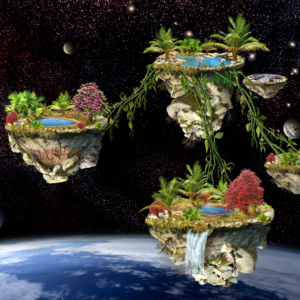
World-building is one of the most exhilarating aspects of fiction writing. Whether you’re crafting a sprawling fantasy realm, a futuristic sci-fi universe, or a richly detailed contemporary setting, the world you create serves as the foundation of your story. A well-constructed world not only grounds your narrative but also captivates readers, drawing them deeper into the lives of your characters and the events that unfold. In this blog post, we’ll explore essential tips for constructing immersive and believable worlds in fiction.
Why World-Building Matters
World-building is more than just setting the scene; it’s about creating a living, breathing environment that shapes the characters, influences the plot, and enhances the overall narrative. A well-built world adds depth and authenticity to your story, making it more engaging and memorable for readers. Whether your world is fantastical, futuristic, or rooted in reality, the attention you pay to its construction can significantly impact how readers experience your story.
Tips for Constructing Immersive and Believable Worlds
1. Start with the Basics: Geography and Environment
The geography and environment of your world serve as the canvas upon which your story is painted. Consider the physical aspects of your setting: landscapes, climates, ecosystems, and natural resources.
- Tip: Create a map, even if it’s just a rough sketch, to visualize your world’s layout. This will help you maintain consistency in your descriptions and provide a clear sense of place.
- Example: In a fantasy world, you might design mountain ranges that separate different kingdoms, deserts that challenge your characters’ journey, or forests filled with mythical creatures. In a contemporary setting, think about the city’s layout, the neighborhoods, and how these environments influence the characters’ daily lives.
2. Establish the Rules of Your World
Every world operates under a set of rules, whether they involve magic, technology, social hierarchies, or natural laws. Defining these rules early on helps create a consistent and believable world.
- Tip: Decide on the limitations and possibilities within your world. If magic exists, how does it work? Are there consequences to using it? If your world is set in the future, what technological advancements exist, and how do they impact society?
- Example: In J.K. Rowling’s Harry Potter series, the rules of magic are clearly defined—spells require specific words and movements, and there are limits to what magic can achieve. This consistency helps maintain the suspension of disbelief.
3. Develop the Culture and Society
The culture and society within your world shape your characters and influence their actions. Think about the social structures, religions, traditions, and values that define the communities in your world.
- Tip: Consider how history, politics, and economics affect the culture of your world. What are the social norms? What are the sources of conflict? How do different groups interact with each other?
- Example: In George R.R. Martin’s A Song of Ice and Fire series, the cultures of the different regions—such as the North, the Iron Islands, and Dorne—are distinct and influence the characters’ beliefs, behaviors, and alliances.
4. Focus on Details That Enhance the Story
While it’s tempting to develop every aspect of your world, focus on the details that directly enhance your story. These can be cultural customs, historical events, or even unique flora and fauna that add richness to your narrative.
- Tip: Introduce details gradually through the characters’ experiences, rather than overwhelming readers with exposition. Show how the world impacts the characters’ lives and choices.
- Example: In J.R.R. Tolkien’s The Lord of the Rings, the existence of Elvish languages, intricate histories, and detailed lineages enrich the world but are revealed through the characters’ journey, making the world feel lived-in and authentic.

5. Integrate the World into the Plot and Character Development
Your world should not just serve as a backdrop; it should be integral to the plot and character development. The challenges and opportunities presented by the world should influence the characters’ decisions and the story’s direction.
- Tip: Use the world to create conflict and tension. How do the characters adapt to their environment? How do they navigate the social or political landscape? How does the world change them?
- Example: In Margaret Atwood’s The Handmaid’s Tale, the dystopian world of Gilead is central to the plot. The strict societal rules and oppressive regime shape the protagonist’s experiences and drive the story forward.
6. Consider the Passage of Time
Time plays a crucial role in shaping worlds. Consider how the passage of time affects your world’s history, technology, and social structures. Time can bring about changes in leadership, natural disasters, or revolutions that alter the landscape of your world.
- Tip: Develop a timeline of significant events in your world’s history. This will help you understand the context in which your story takes place and provide depth to your narrative.
- Example: In Frank Herbert’s Dune, the history of the various factions and the long-standing feud over the desert planet Arrakis are key to understanding the motivations of the characters and the unfolding of the plot.
7. Create a Sense of Atmosphere
Atmosphere is the emotional tone or mood of a setting, and it can greatly enhance the reader’s experience. Whether it’s the eerie silence of a haunted forest or the bustling energy of a futuristic city, atmosphere helps immerse readers in your world.
- Tip: Use sensory details—sights, sounds, smells, and textures—to build atmosphere. Consider how weather, lighting, and architecture contribute to the overall mood.
- Example: In Neil Gaiman’s Neverwhere, the underground world of London Below is depicted with a dark, mysterious atmosphere that contrasts with the mundane reality of London Above, making the setting feel otherworldly and dangerous.
World-building is an essential aspect of fiction writing that requires careful thought and creativity. By focusing on geography, rules, culture, details, and how these elements integrate with your plot and characters, you can create immersive and believable worlds that captivate readers. Whether you’re crafting a fantasy epic, a sci-fi adventure, or a contemporary tale, a well-built world will make your story more engaging and memorable. So dive deep into your imagination, build worlds that resonate, and watch as your readers are drawn into the universe you create.

I am the founder of ArmLin House, as well as the Chief Editor and Creative Director. For over thirty-five year, I’ve worked in technology, business development, marketing, writing, and publishing jobs. In the last 5 years I’ve returned to school and have become a graphic designer and social media video editor. In general, I have A LOT of experience in A LOT of industries and I love to help people, which is one of our main missions as a company. Learn more about me on my LinkedIn page.